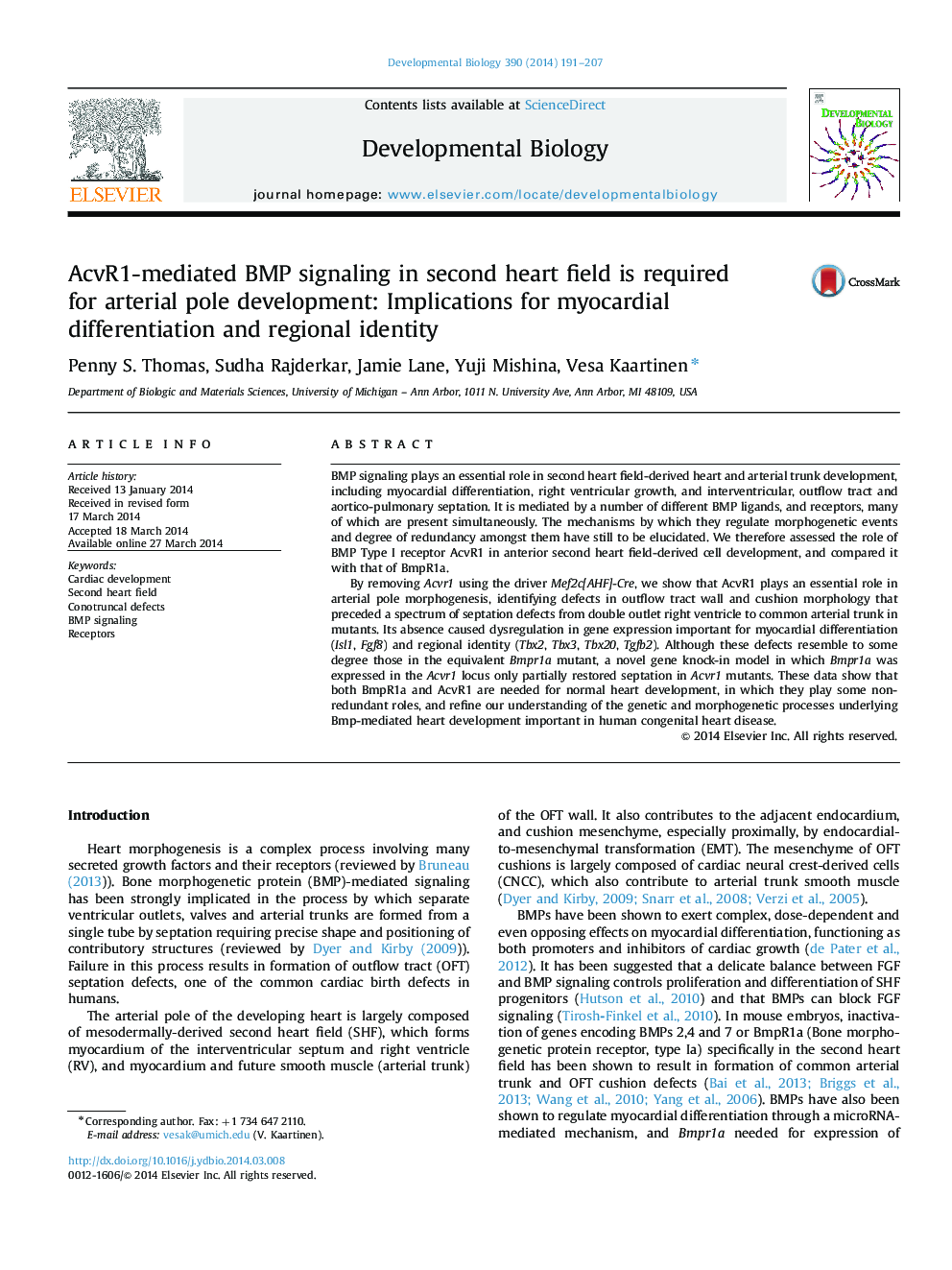| Article ID | Journal | Published Year | Pages | File Type |
|---|---|---|---|---|
| 8468007 | Developmental Biology | 2014 | 17 Pages |
Abstract
By removing Acvr1 using the driver Mef2c[AHF]-Cre, we show that AcvR1 plays an essential role in arterial pole morphogenesis, identifying defects in outflow tract wall and cushion morphology that preceded a spectrum of septation defects from double outlet right ventricle to common arterial trunk in mutants. Its absence caused dysregulation in gene expression important for myocardial differentiation (Isl1, Fgf8) and regional identity (Tbx2, Tbx3, Tbx20, Tgfb2). Although these defects resemble to some degree those in the equivalent Bmpr1a mutant, a novel gene knock-in model in which Bmpr1a was expressed in the Acvr1 locus only partially restored septation in Acvr1 mutants. These data show that both BmpR1a and AcvR1 are needed for normal heart development, in which they play some non-redundant roles, and refine our understanding of the genetic and morphogenetic processes underlying Bmp-mediated heart development important in human congenital heart disease.
Related Topics
Life Sciences
Biochemistry, Genetics and Molecular Biology
Cell Biology
Authors
Penny S. Thomas, Sudha Rajderkar, Jamie Lane, Yuji Mishina, Vesa Kaartinen,
